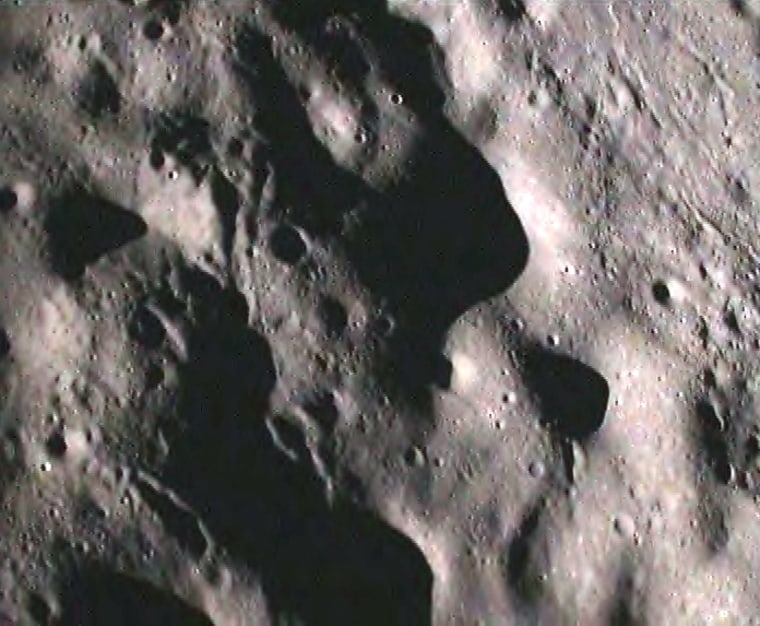Indian researchers say they have found organic matter on the moon, a discovery that may be seconded by U.S. teams analyzing a plume of debris kicked up by the deliberate crash of a rocket body into a lunar crater.
Finding organic materials on the moon could help scientists understand the history of comet and meteorite impacts, as well as provide valuable resources for future lunar travelers or colonies.
Indian Space Research Organization scientists announced last week that a probe dispatched from the Chandrayaan-1 lunar orbiter detected chemical signatures of organic material. The Moon Impact Probe, or MIP, separated from the Chandrayaan 1 orbiter on Nov. 14, 2008, and flew into Shackleton Crater, located on the moon's south pole.
NASA followed with a similar mission in October that excavated a much larger debris plume from the crater Cabeus, also located on the moon's south pole. Both teams reported finding water.
ISRO's Surendra Pal said at a conference in Bangalore, India, last week that MIP also found organic compounds, though scientists were still working to confirm the results.
"It is an intriguing suggestion," NASA's chief lunar scientist, Michael Wargo, told Discovery News. "We are certainly very interested in learning more of their results."
NASA scientists, meanwhile, are continuing to scrutinize data collected by the Lunar Crater Observation and Sensing Satellite, or LCROSS, and other probes which watched as a 2.5-ton empty rocket body smashed into the floor of Cabeus, kicking soil and ice past the crater's rim and into sunlight for the first time in billions of years.
Organic compounds are composed of carbon in combination with other elements such as hydrogen, oxygen and nitrogen. Although they form the building blocks of life, they do not necessarily come from actual organisms. Instead, they could have been created in outer space through chemical reactions — then they could have been delivered to the moon by comets or meteorites. One particular type of organic compound, polycyclic aromatic hydrocarbons, has been found in a wide variety of space environments.
NASA previously found molecules of carbon, hydrogen and nitrogen in lunar soil samples brought back to Earth during the Apollo moon missions of 1969-1972, but the concentrations were extremely sparse. No complex compounds were found, although they likely were delivered to the moon by meteorites crashing into the lunar surface.
"Apparently, the harsh surface conditions destroy the more complex molecules exposed to space," Paul Spudis, senior scientist with the Houston-based Lunar and Planetary Institute, wrote in an e-mail to Discovery News.
The moon's cold spots are different, he added.
"We've suspected that they might contain organic molecules for the same reason that water ice is there — they are protected by the extreme cold," Spudis said.
Initial results from LCROSS show some organic material was present in the debris plume, though exactly what and how much has not yet been determined.
This report was supplemented by msnbc.com.
